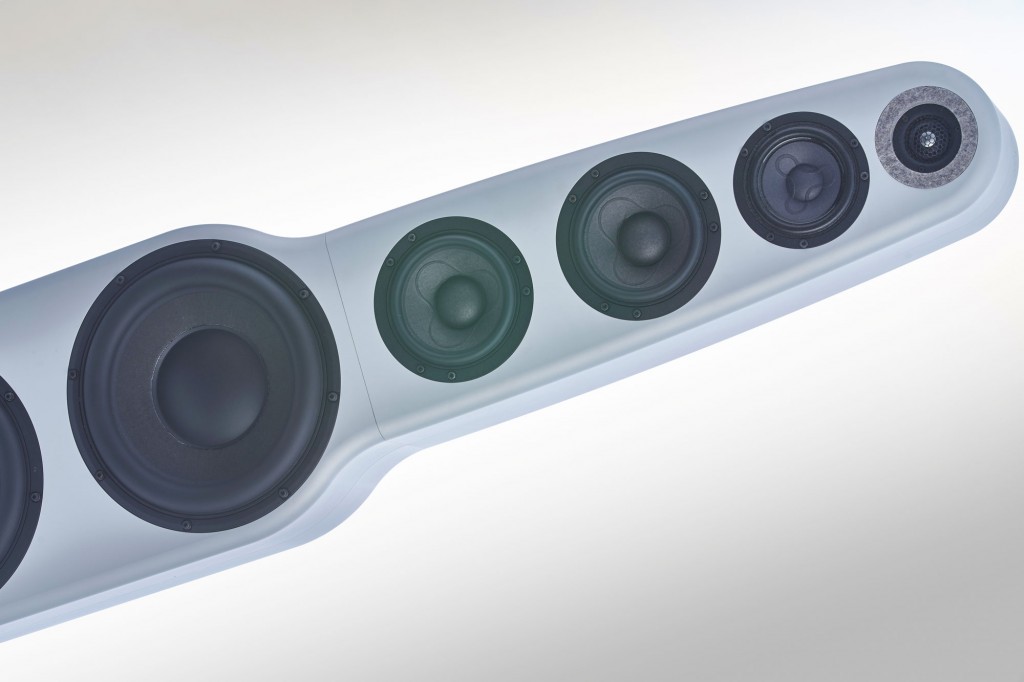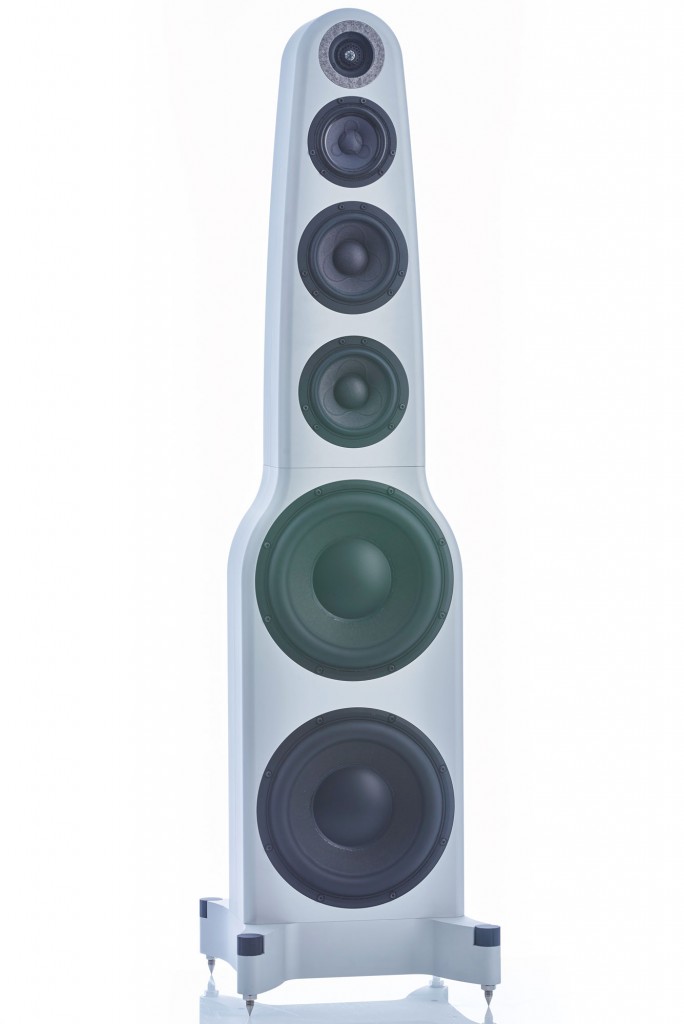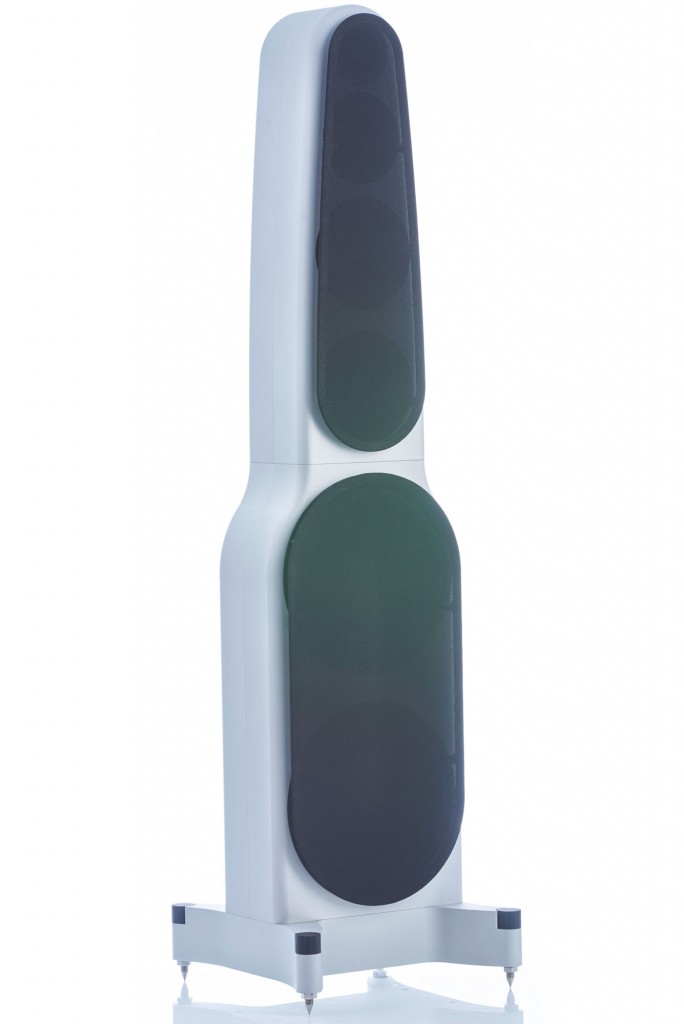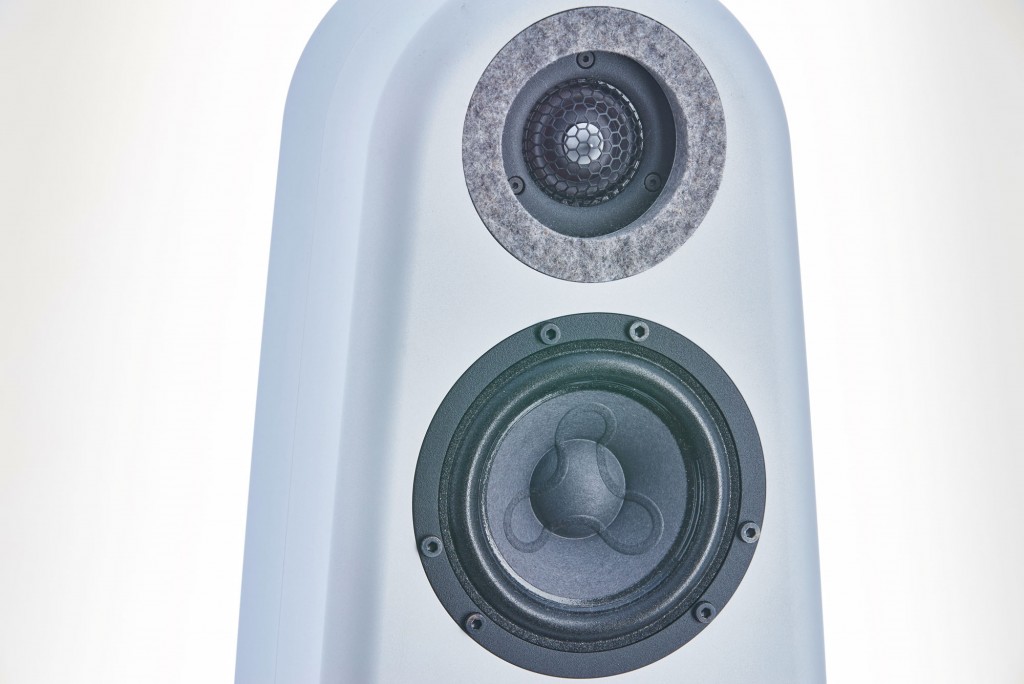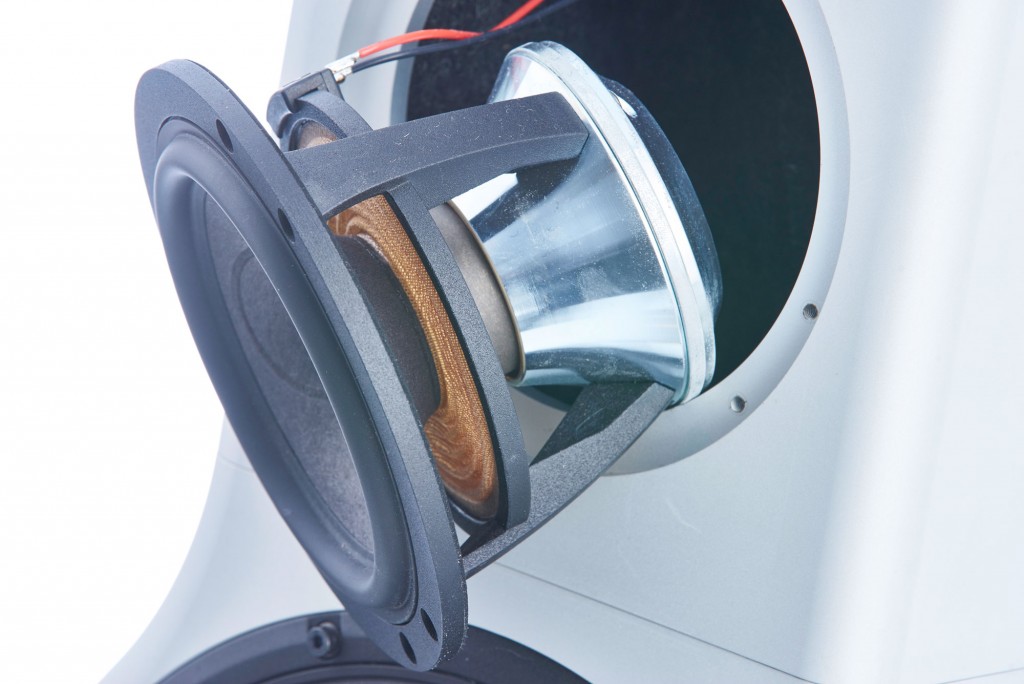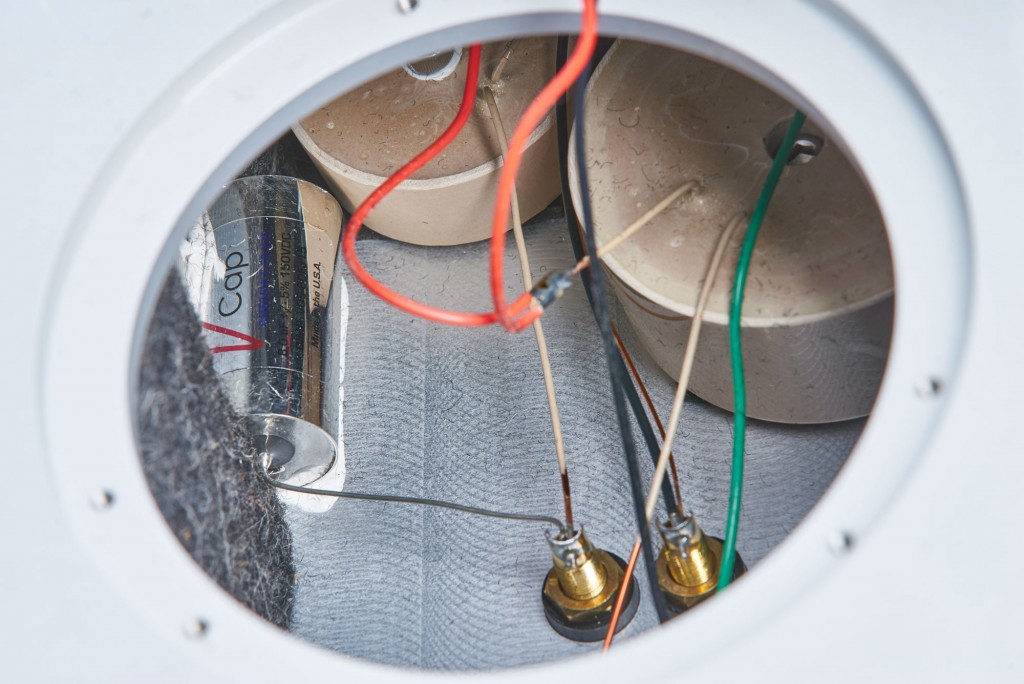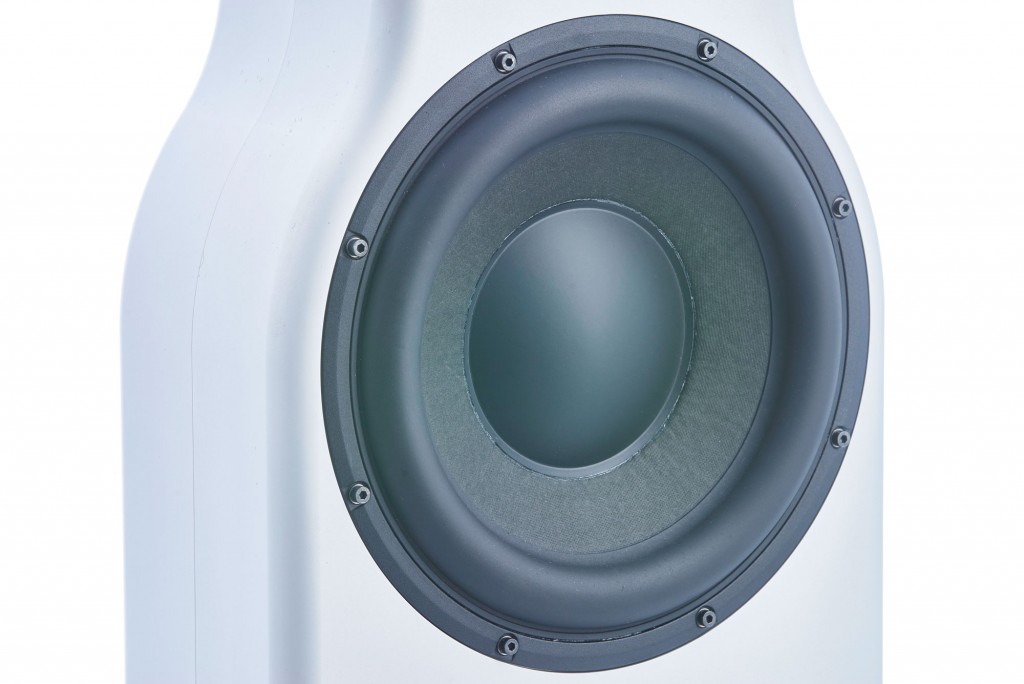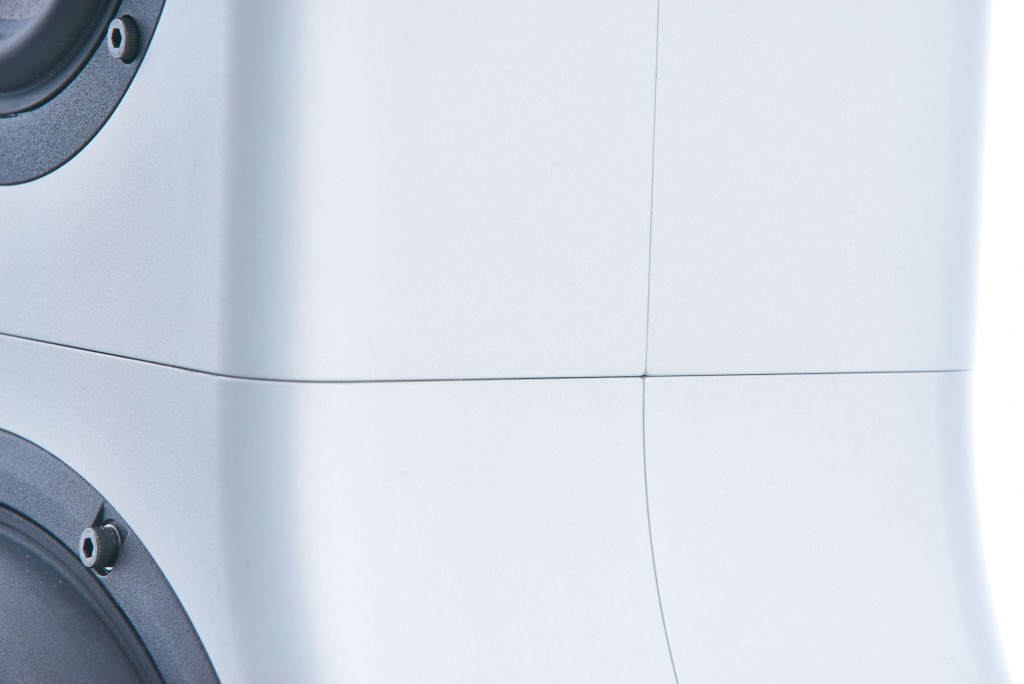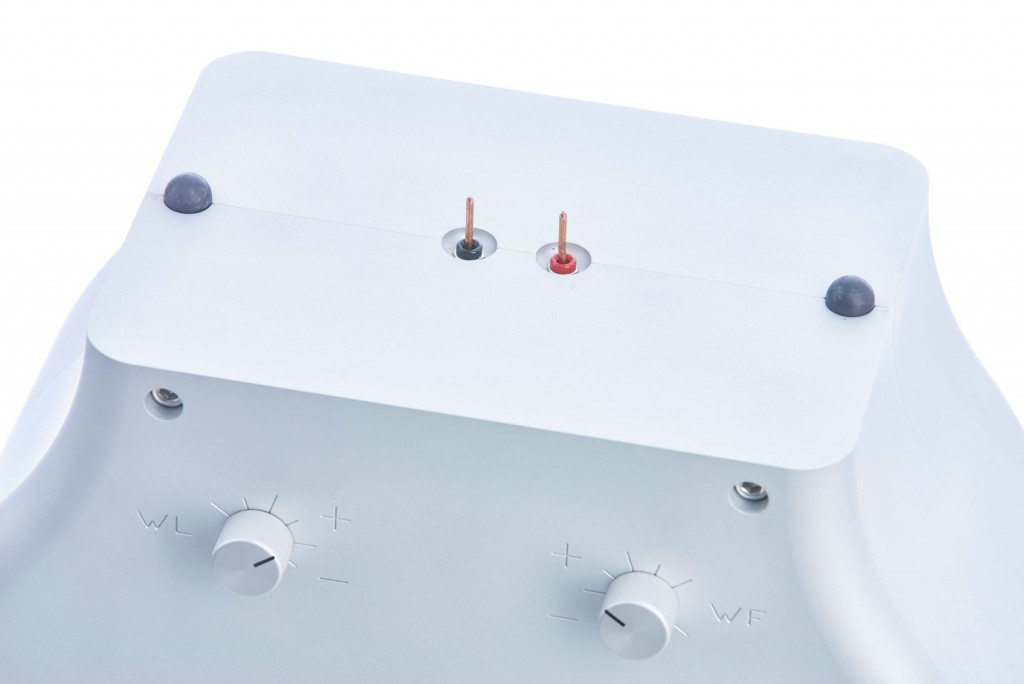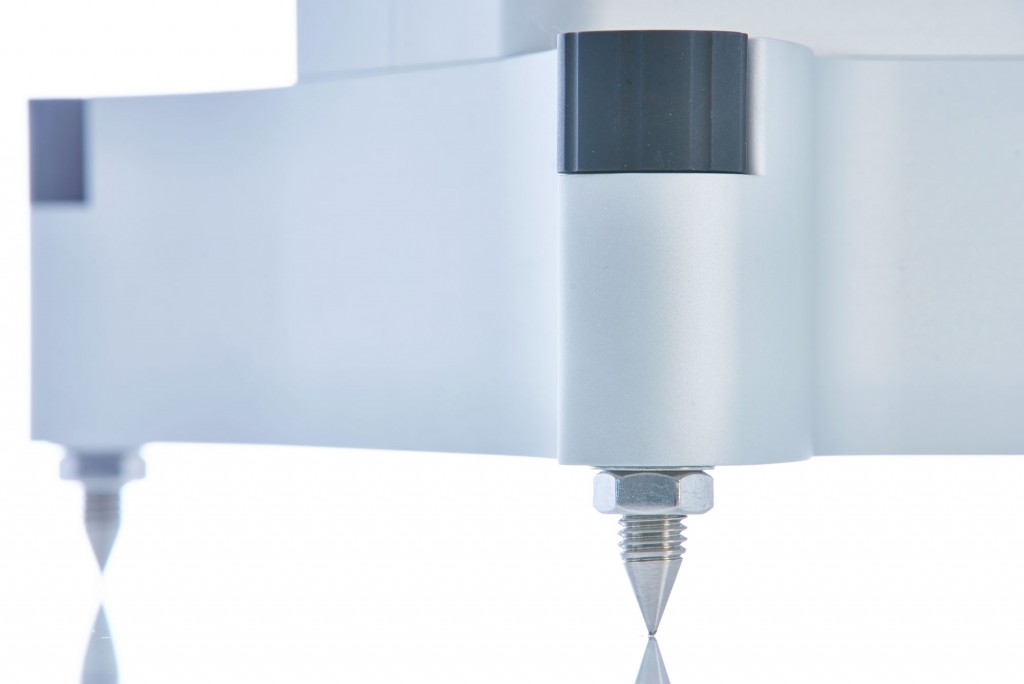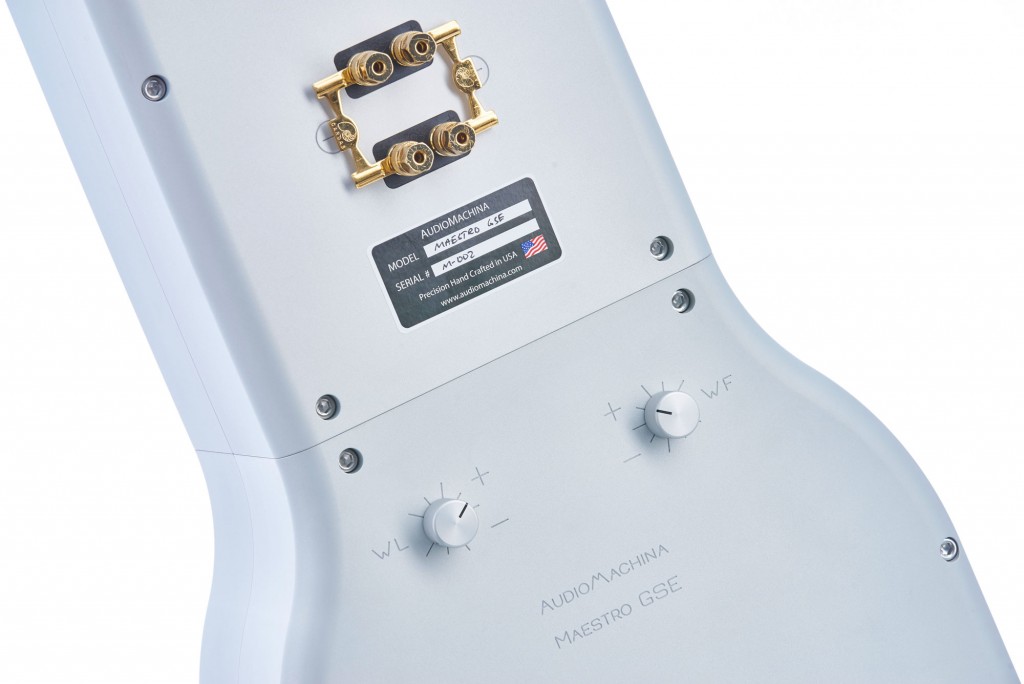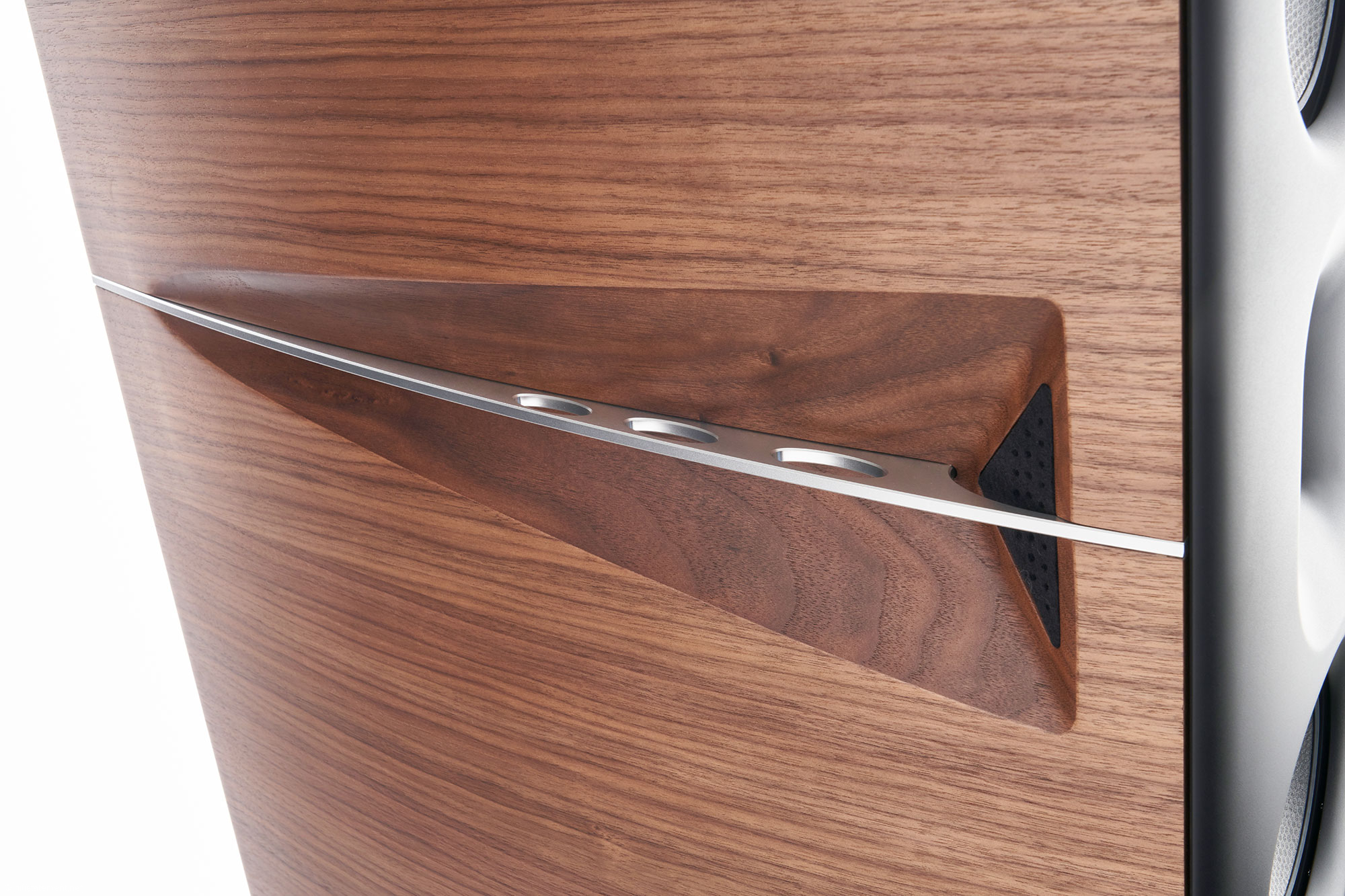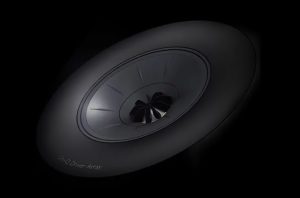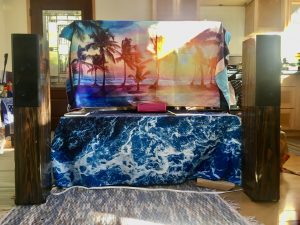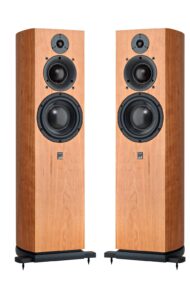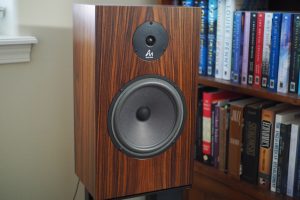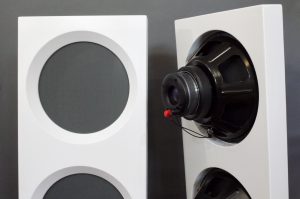There are good reasons to review everything else other than loudspeakers. And the logistics is not even the worst reason. But there's a whole range of good reasons to look into AudioMachina's top of the range model. And that's why I've now lived with the Maestro GSE for several months.
This is the first reason why loudspeaker reviews are usually not so attractive: the time factor. When reviewing other components, provided that the respective components have been warmed up and connected long enough to the power supply—for a converter that can easily be over a week—then you can in one or two days make a very reliable assessment of the object in question. This is different for acoustic transducers. They interact more intensively with your own room and characterise the overall sound within an audio chain for a long time. This is why it's difficult to change from your usual loudspeakers, as you have usually had them for a long time, and gotten used to their strengths and weaknesses. Thus it takes some time until you're open-minded for an objective approach. And whilst after a while the advantages and disadvantages of the test objects become apparent, you don't trust yourself to evaluate other components with them, although the daily business should carry on in the meantime. If alongside you have to be clear for tonal changes for a remastering project as well, then you feel as though you are on thin ice with anything other than your own loudspeakers. But with AudioMachina it was different.
The AudioMachina Maestro GSE consists of three parts: the massive base, the subwoofer and the so-called monitor module which works from 100 Hertz.
Volker Bohlmeier, Head of Einstein and Distributor for TechDAS and AudioMachina in Germany, wanted to present them to me briefly when he, to my regret, picked up the Japanese analogue monument Air Force One. What these seemingly delicate pillars then offered me in my listening room, even though we didn't move the Lumen White out of the room, but just pushed them quickly into the corner, then quickly convinced me to familiarise you with these exceptional loudspeakers. Even without a lot of moving around the Maestro GSE fascinated me with a spatial representation which belongs to the best of anything I was ever able to enjoy in my listening room. Even if this discipline used to be the most important for me up until now, with AudioMachina it wasn’t the only advantage. They produced a pressure in the bass range which was simply irresistible for me. But instead of enthusing about the sound perhaps I should explain what makes the AudioMachina technically so special. And that's a lot.
With a body depth of only 15 cm the AudioMachina can be integrated easily into any living room. But don't underestimate them: they sound a lot bigger than they seem.
Before we get to the details perhaps I should tell you that all AudioMachina models were conceived and built by Dr. Karl Schuemann in Fort Collins, Colorado. To be able to ensure the desired quality he builds the loudspeakers exclusively by himself. He doesn't want to rely on employees for manufacturing even if this decision means the maximum number of loudspeakers produced is limited. His own standards of quality are much more important than commercial interests. Naturally the amplifier for the active subwoofer module as well as the driver units Dr. Karl Schuemann buys. However the assembly into the housing, produced on his own CNC machines, the developer does by himself. Volker Bohlmeier told me that Dr. Karl Schuemann generates the electricity for the energy-intensive aluminium CNC machining and his house himself by using a solar energy system.
The Maestro GSE is delivered in three seemingly easy to handle boxes which prove to be extremely heavy for their size. They include the massive base with well manageable spikes (one of the innovations which differentiates the GSE from its predecessor Maestro S), and the subwoofer as well as the monitor. All parts are made from thick aluminium solid blocks and the elements for the subwoofer and monitor are made up from two shells machined and screwed together. With this manufacturing process Dr. Karl Schuemann is free to choose the thickness of the material thanks to the respective programming of the CNC machines. According to his explanations on the homepage under the menu item "pearls," the highest load on the casing occurs in the corners, which is why the thickest material can be found there. The result is an aluminium construction which with the compulsory knock test only a very short and quiet "knock" can be heard. Thus the housing as a parasitical sound source should now be completely absent. It is characterised by gently chamfered edges and an acoustic baffle, which especially with the subwoofer is only minimally wider than the integrated driver units and is extremely close to theoretical ideal.
The mid-range driver and the ring radiator come from Skan-Speak just like all drivers in the monitor module.
The two 26 centimetre bass in the subwoofer module are supplied by Peerless and were first choice for Dr. Karl Schuemann because of their perfect damping characteristics (Q-factor). Despite the disappearingly small housing volume, the subwoofers are driven by an amplifier module with 1000 Watts power. The upper frequency limit and the volume level of the subwoofer can be chosen by two control knobs which have nine steps respectively. The subwoofer obtains the signal via two thin copper rods, which connect the sockets in the woofer and monitor module with each other. The two housings are decoupled from each other by two rubber balls with a diameter of approximately one centimetre each. Four elastic sticky pads ensure that both elements cannot topple over. Naturally it's more elegant because no connection can be seen between the woofer and monitor. Putting together the monitor without bending the copper bars requires two people who, in addition to muscle power, should also have finesse as well. I would at least wish for slightly more stable rods. Admittedly I did dismantle and set up the AudioMachina one or two times to swap places with the Lumen White. This really tiny criticism naturally doesn't apply if you decide to buy a Maestro GSE which your dealer or salesperson then assembles for you and you leave it in that place. I really can't imagine that you would like to move the AudioMachina out of your listening room for acoustic reasons.
Two of these powerful woofers ensure the necessary sound pressure between 100 and 800 Hertz.
From 100 Hertz both woofers with a 15cm diameter take over, and are just like the other drivers in the monitor module from Scan Speak. They are the reference level for the rest of the driver units, as they are the only ones where the volume cannot be adjusted. From 800 to 3000 Hertz a mid-range driver takes over. Above this the known ring radiator begins to work. The bi-wiring terminals which were first introduced with the GSE allow separate control of the low mid-range driver units and the high frequencies. The crossover is only of first order (6dB/Oct), as Dr. Karl Schuemann dislikes higher order filters because of the bad phase response within the crossover range. He justifies this in detail, but not without side blows to competitors, under the topic "Pearls" on his website. The fixation to a first grade crossover also influenced the choice of the driver units. They must still work in a linear manner high above the crossover frequency as they are faded out very slowly and any nonlinear behaviour high above the crossover frequency will cause audible interference. This is why the Scan Speak Illuminators with their paper membranes were the first choice for Dr. Karl Schuemann. "Modern" membrane materials such as ceramics for example require a crossover of higher order, the developer explained during a telephone call.
A glance in the monitor module: it's muffled with felt. V-caps belong to the best that the American market has to offer.
It gives the Maestro a well-balanced phase behaviour which makes it easy to power even for a tube amplifier. But the greatest possible freedom in the choice of the amplifier is guaranteed by the so-called MAPS system. The abbreviation means "Monitor and Powered Subwoofer". As the integrated amplifiers in the subwoofers with their 1000 watts take care of both the powerful 26 centimetre subwoofer drive units, the stereo amplifiers only need to power the relatively easy to control monitors. And that should easily be possible with most good solid-state or tube amplifiers. Even more difficult to find and to finance, are the amps which manage to cover the range between enormous performance and control on the one hand and music and transparency on the other hand. But the Maestro GSEs don't require this thanks to their bass electronics. A further advantage of the active concept is the possibility using switches for the level and the upper frequency limit of the woofer which can be set to between 60 and 160 hertz, to tackle the bass problems of the room. Naturally that worked exceptionally well in my listening room. The setting of both switches quite a bit in the plus range could nearly entice me never to accuse my Lumen Whites of showing a breeze of severity and a slightly overdone reservation in the higher bass range again: in this range my room simply swallows part of the radiated power. But AudioMachina leaves them well behind: after turning up the bass control they deliver so much bass energy that you won't need any more.
Two of these 26cm subwoofers and an ICE power amplifier with 1000 watt generate real bass without even stressing the amplifiers in the slightest.
This naturally tempted me to pull out one or other old test LP and just to bathe in the bass. What could be better than listening to Stevie Ray Vaughn's "Tin Pan Alley" from the album Couldn't stand the weather? Tommy Shannon's E-Bass rolls pleasantly and boldly through the room but still has the necessary outlines and definitions. You'll melt away! Even though I haven't listened to the LP for a few years I can't remember such a great echo / reverberation even if I try really hard. And the guitar playing fascinates sometimes with soft flowing melodies full of detail and other times with heavy attack. Admittedly part of the dynamics and details which are so important for the feeling of space might be able to be attributed to the Lumen White Mystere turntable, but they are in the end implemented by the AudioMachina. And that is absolutely fantastic.
If it's about deep bass, then Bela Fleck's The Flight of the Cosmic Hippo springs to mind. In the track Victor Wooten's e-bass rolls raspingly into the depths of bass and with a transparency and blackness which I have never heard from a passive acoustic transducer with a ported housing before. Banjo and the electronic drums provide lots of dynamic accents and the studio delay which surrounds the individual instruments can be heard very clearly. Everything's wonderful.
The interface between the subwoofer and monitor module (above): with these gap measurements, even car manufacturers will be envious. The cabinet consists of two shells which have been milled from thick aluminium and screwed together.
After listening to the Lumen White in the meantime, I missed a certain lightness with the AudioMachina, which in my experience depends on the frequency response. An acoustic transducer with solid, powerful bass foundation seems a little more sedate and less open than the one without. So I played a little bit with the Maestro GSE's upper limit frequency and the level of the subwoofer module. As soon as I reduced the level by one notch on the control knob the AudioMachina was clearly more open. In my excitement for the crisp bass I overdid it a little bit. That I didn't notice it before was due to the fact that the Maestro GSEs work in a very quick and agile way. Surprisingly even increasing the bass here does not lead to the expected complacency. With the control knobs you have control whether the AudioMachina should act a little bit lighter and more airy or with a lot of pressure in the low frequencies. Exceptional listening pleasure with an impressive spatial representation is definitely guaranteed. And joyful playback and speed don't suffer in the least under such an extra portion of bass energy.
The upper side of the subwoofer module: the copper pins which are endangered during assembly have already been inserted to transport the signals here. The rubber balls prevent the subwoofer vibration being transmitted to the monitor module. Before this is mounted, four double-sided sticky elastic pads are stuck to the corners which prevent the construction from toppling over and provide further damping of vibrations.
Even if in the GSE generation the Maestro is equipped with bi-wiring terminals, I have only connected them with one loudspeaker cable with the Ayon-Mono-Amps. I'm not really a downright bi-wiring fan. Even though during his visit Volker Bohlmeier told me enthusiastically about the bi-amping operation of the AudioMachina with four of his Einstein Silver Bullet OTL mono amplifiers, I really couldn't imagine running four class-A heating modules in my really small listening room or even transporting them there. According to Volker the bi-amping operation with two Einstein The Poweramp hybrid stereo amplifiers is the second best solution. Not that anything in the least was missing during the operation of the Maestro GSE on the Ayon Epsilon bursting with energy with the KT 150, but I was still curious whether driving the higher mid-range range and the lower mid-range separately justifies the investment in a second amplifier tonally, as Dr. Karl Schuemann with his MAPS system has ensured that power amplifiers will have an easy job with the Maestro. However before I connect the two The Poweramp, then I will first swap a stereo amplifier for the two Ayons.
Thanks to the active subwoofers in the Maestro GSE, the 2x 90 Watt from the Poweramp are suitable even for louder volumes. To my amazement the hybrid amplifier suggested even larger virtual rooms than the Epsilons, or in other words: they radiated more detail and deeper dimensions. But I didn't select the Epsilon as a supplement for a partially active loudspeaker concept; I selected it because it has the necessary power to get the three bass driver units of a LumenWhite moving but still to keep them on a short lead. For the AudioMachinas there would certainly be a more sensitive solution in the Ayon range than the powerful Epsilon. But that would be another story. Before I switched over to bi-amping, I enjoyed the musical flow and the wide ranges from the interaction between The Poweramp and the Maestro GSE where the listener is truly pampered. It doesn't matter that there are songs in the Amarra playlist which I have been heard many times before, when I was comparing the Ayons and the Poweramp. Just like top-class jazzmen with acquainted standards can still take pleasure in entirely new facets, Einstein and AudioMachina have managed to present the old pieces in a new light.
Thanks to this well thought-out and accurately manufactured base construction, the AudioMachina's four spikes can be adjusted easily and are really stable.
First of all, with the changeover to bi-amping, nothing spectacular really happened. Yes, if you concentrated hard, then you would discover here and there a reverberation which lingers slightly longer and then dies away and also one or another detail might not have managed to reach the threshold of consciousness, but it's probably still there when I change back to just one stereo amplifier. As the amplifiers slowly warm up, then I notice a bit more space around the instruments. They seem to be more stable in the room, which now seems to be slightly larger. With the Cologne Concert Jarrett's playing now seems more flowing, it's easier to differentiate between the sound of the body and the strings, without this wanting to sound a tick too analytical, and the pianist's boisterous accentuation is easier to hear but without interfering.
Initially I was sure it wasn't worth connecting a second amplifier, but after roughly 15 minutes I doubted my spontaneous verdict and the longer I listen, the more certain I become that I don't want to miss the second The Poweramp any more. As I mentioned it's not about eye-catching effect here. With two stereo amplifiers the AudioMachina seem to be further behind the music, which is now even more natural, self-evident and somehow flows into the room better. Experienced high-end listeners should know something similar from the comparison between extremely good turntables with one of the few world-class examples. Initially you underestimate the differences, but once you have recognised the differences, then it is nearly impossible to be content with the second-best solution. But it's not about the advantages of the bi-amping here, but rather the Maestro GSE. It shows each improvement in the chain beforehand conscientiously, but also spoils you with an absolutely fascinating spatial representation even with a reasonably simple installation. I don't know any other acoustic transducer which shows itself so unpretentiously when setting up as the Maestro GSE. I still know exactly how long I needed to get a similarly spatial representation out of the Lumen White.
With the subwoofer you can set the upper frequency limit and the level. The bi-wiring terminals are from Cardas.
STATEMENT
Sound wise the AudioMachina fulfills all expectations which come from a glimpse at the price tag, and passes with flying colours. But with the Maestro GSE you are not only buying a nearly perfectly built loudspeaker, which can be integrated into virtually any living environment thanks to its minimalistic design. You are also getting as a bonus a rarely offered ability: Dr. Karl Schuemann has designed the Maestro GSE for all eventualities of possible locations. You don't need to set them up exactly down to the millimetre to be able to inspire with a terrific spatial representation. With four rotary controls the tone can be attuned to the room and a powerful amplifier isn't needed either. Plug'n'play at top-class level. A real discovery!
Listened to with:
- Nagra VI
- iMac 27‟, 3.06 GHz Intel Core 2 Duo, 8 GB, OS X Version 10.10.2
- Amarra Symphony 2.6, Audirvana, Pure Music
- Wadia WT3200
- Mytek 192-DSD-DAC, M2Tech Young DSD and Van der Graaf
- Brinkmann LaGrange with tube power supply, LumenWhite Mystere
- AMG Viella 12‟, Thales Simplicity, SME V
- Einstein The Pickup, Brinkmann EMT ti, Lyra Olympos SL, Lyra Etna
- Studer A80
- Einstein The Turntable‘s Choice (sym), Blue Amp
- Einstein The Preamp
- Ayon Epsilon with KT 150, Einstein The Poweramp (2x)
- LumenWhite DiamondLight Monitors.
- Precision Interfacer Technology, HMS Gran Finale Jubilee, Audioquest, Swiss Cables Reference, Goebel High End Lacorde.
- PS Audio Power P5, Clearaudio Matrix, Sun Leiste, Audioplan Powerstar HMS-wall sockets, Acapella Basen, Acoustic System feet and resonators, Finite Elemente Pagode Master Reference Heavy Duty and Cerabase, Harmonix Real Focus, Audio Exklusiv Silentplugs.
Manufacturer's specifications
- Construction: enclosed 4 way reference standing loudspeakers
- Housing: made of aluminium sheets, modular MAPS system
- Frequency range: 15Hz - 30 kHz
- Sensitivity: 89dB at 4 Ohms, good natured phase characteristics
- Equipment: 2 x 26cm bass, 2 x 15cm midbass, 12 cm mid-range, 2.5cm tweeter
- Crossover frequencies: Bass 100 Hz, Low-mid range 800 Hz, Mid-high range 3 kHz
- Subwoofer: enclosed, active, MSX filter, 1000W ICE power amplifier
- Setting options: Subwoofer: frequency and level can be adjusted. Mid-range and high range frequencies: level can be adjusted
- Dimensions (H/W/D): 130 x 30 x 30 cm (including base)
- Weight: 80kg per speaker, assembled
- Recommended amplifier power: 100 - 500 W per channel at 4 ohms
AudioMachina Maestro GSE
Price: 80,000 Euros




